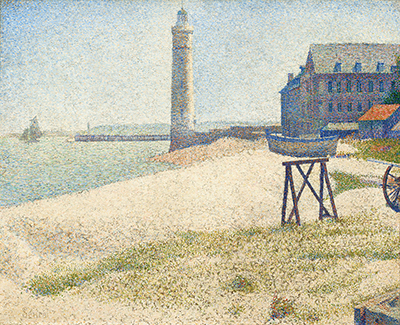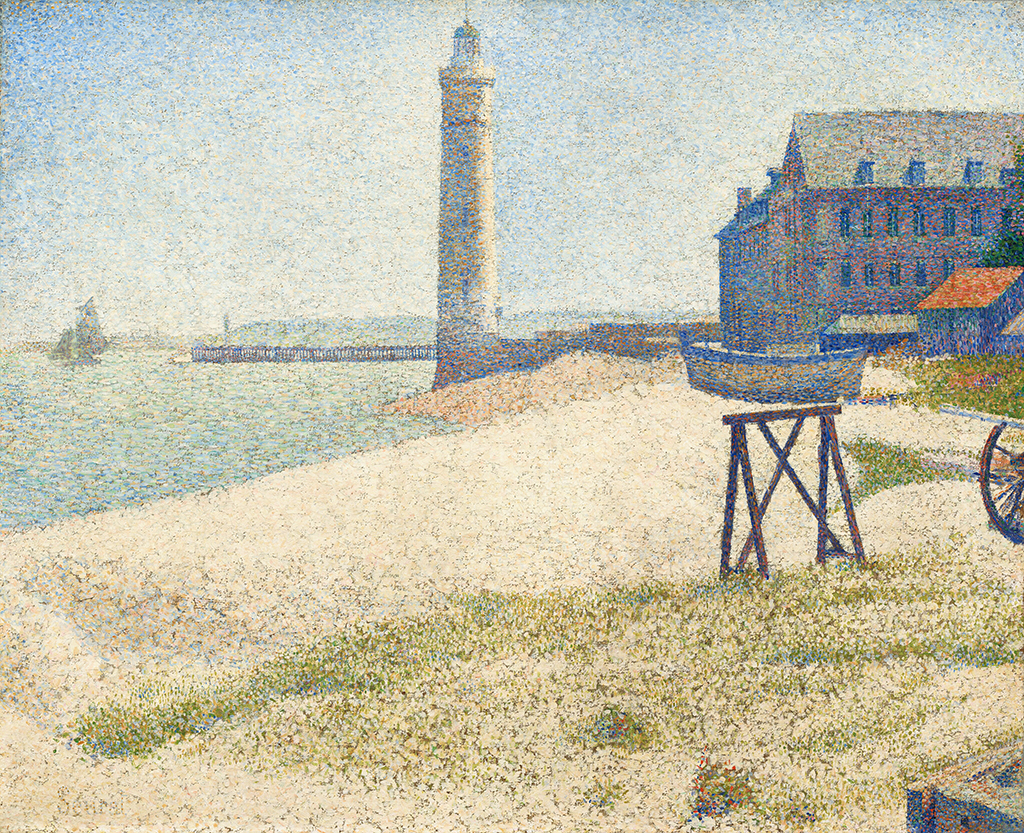The Lighthouse at Honfleur is an oil on canvas painted in 1886 by Georges Seurat, a twenty-seven-year-old artist from Paris. It depicts a scene of hazy serenity, without the movement that usually accompanies coastal views. The sea in the harbour fills the left-hand portion of the canvas and is shown as an expanse of small, uniform dots representing the calmest of still, flat waves. On the right are the three-storey harbour buildings that are only partially in view. The centre of the painting is occupied by the lighthouse that points upwards into a pale blue, cloudless sky and radiates light into the centre of the painting as a whole.
Benign Atmosphere
Georges Seurat is credited with developing pointillism, a technique that involves painting in minute dots. He was fascinated by the use of colour to illustrate emotions. In The Lighthouse at Honfleur, he perfectly conveys the sensation of how peaceful a warm, benign summer day can be. The carefully applied pale blue and turquoise dots of the sea and sky capture the breezeless calm. On the shore, the pale beige of the sand filters up into the lighthouse that is brightly lit on it right-hand side. The minute brushstrokes of pale, warm colours create the three-dimensional shape of the lighthouse.
Mathematical Art
There's a distinct mathematical balance about The Lighthouse at Honfleur. The lighthouse and the building on the right stand parallel to each other forming a vertical illusion. Imaginary horizontal lines form across the painting through the distant pier and coastline. A small yacht on the far left is balanced by the moored rowing boat on the right near the building. Seurat was heavily influenced by Michel Eugene Chevreul's written notes and the artwork of Delacroix who both investigated how adjacent colours can contribute to emotional atmospheres. Seurat believed his use of colour had a mathematical precision and even attended lectures on the science of colours and prisms given by Charles Henry.
Post-Impressionist
Seurat's painstaking dots of unmixed pigments in The Lighthouse at Honfleur illustrate his methodical, orderly technique and composed personality. The painting is often regarded as the origin of the Post-Impressionist movement which counteracted the blurred, free-flowing brushstrokes used in Impressionist art. Seurat's work of the 1880s was eventually expanded into cubism by Pablo Picasso in 1911. The Lighthouse at Honfleur measures 26.25 by 32.25 inches (66.7 by 81.9 centimetres) and is currently held at the National Gallery of Art in Washington, America.





